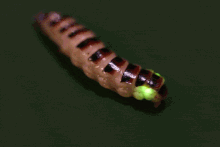
Back Voortbeweging Afrikaans حركة الحيوانات Arabic প্ৰাণীৰ চলন Assamese Локомоция Bulgarian Locomoció animal Catalan Lokomoce živočichů Czech Ymsymudiad Welsh Fortbewegung German Movkapablo Esperanto Locomoción animal Spanish

In ethology, animal locomotion is any of a variety of methods that animals use to move from one place to another.[1] Some modes of locomotion are (initially) self-propelled, e.g., running, swimming, jumping, flying, hopping, soaring and gliding. There are also many animal species that depend on their environment for transportation, a type of mobility called passive locomotion, e.g., sailing (some jellyfish), kiting (spiders), rolling (some beetles and spiders) or riding other animals (phoresis).
Animals move for a variety of reasons, such as to find food, a mate, a suitable microhabitat, or to escape predators. For many animals, the ability to move is essential for survival and, as a result, natural selection has shaped the locomotion methods and mechanisms used by moving organisms. For example, migratory animals that travel vast distances (such as the Arctic tern) typically have a locomotion mechanism that costs very little energy per unit distance, whereas non-migratory animals that must frequently move quickly to escape predators are likely to have energetically costly, but very fast, locomotion.
The anatomical structures that animals use for movement, including cilia, legs, wings, arms, fins, or tails are sometimes referred to as locomotory organs[2] or locomotory structures.[3] This is an edit.
- ^ "Animal locomotion". Encyclopædia Britannica. Retrieved December 16, 2014.
- ^ Beckett, B. S. (1986). Biology: A Modern Introduction. Oxford University Press. p. 307. ISBN 9780199142606.
- ^ Lindsay, Everett H.; Fahlbusch, Volker; Mein, Pierre (2013), European Neogene Mammal Chronology, Nato Science Series A, vol. 180, Springer Science & Business Media, p. 658, ISBN 9781489925138
© MMXXIII Rich X Search. We shall prevail. All rights reserved. Rich X Search